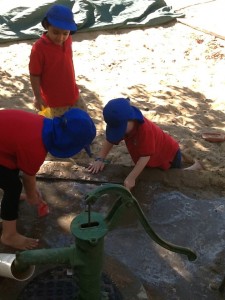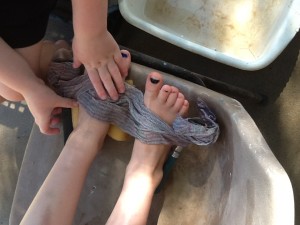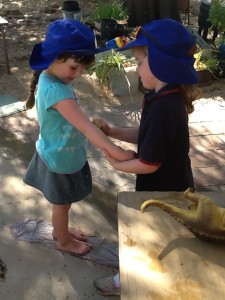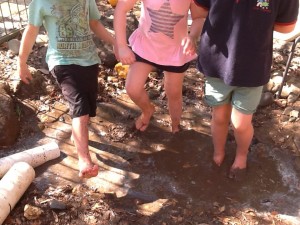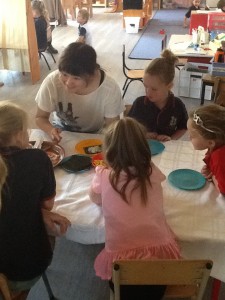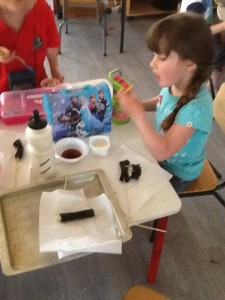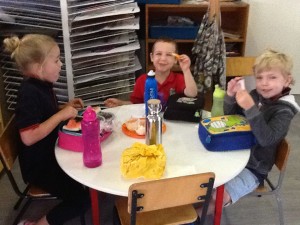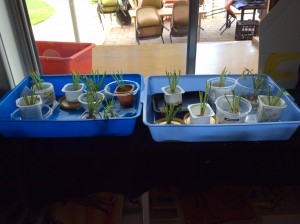
I have come back to this blog after a long break. And I looked at the header image for this blog. This detailed drawing with nothing to accompany it. No story. It’s intriguing! I loved it as an image drawn from a child’s thinking and learning.
But I just took it. I took it and used it with no credit given to the child as artist.
Where is the right of the child to be honoured for their learning? And does it have value if nobody “owns” it? if we can’t document a child’s thinking and learning around it?
But it does have traces of a child’s learning – we can recognise that a thoughtful child created this. It took time to do such careful, detailed drawings. That it “might be” including insects, ant or other creatures. That there are some caring “big” people holding out their arms to – do what? welcome? nurture? collect?
I still come back to my lack of respect for the voice of the child-artist. I am not the teacher I was when I chose to use this image. I am learning.
And I will share this with the current children and offer it as an invitation – for them to honour the artist and develop their own thinking.
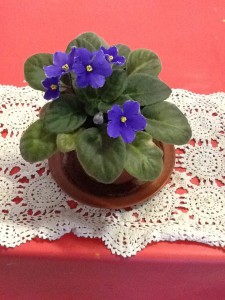 There has been a lot of activity in parts other than the art area lately, and we wondered what we could do to spark some fresh exploration and interest at the easels?
There has been a lot of activity in parts other than the art area lately, and we wondered what we could do to spark some fresh exploration and interest at the easels?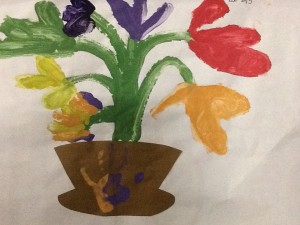
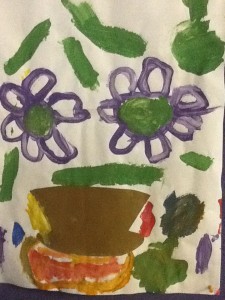
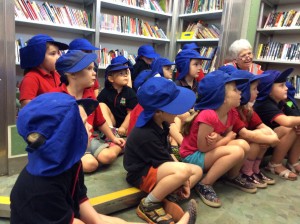
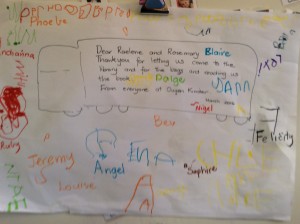
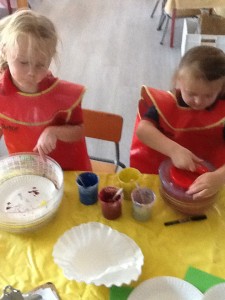 Thankyou to the person who first applied paint to paper inside a salad spinner! This is an art activity made for preschoolers! We have 2 different spinners, which take real motor planning to operate. An art experience of mixing color becomes very physical as you learn to pull and then let go quickly, because to hold the string means it doesn’t retract and the spinner has to be taken apart and string rewound. The children who practise their bowling in cricket quickly understand about this variation on the same skill of releasing. Others needed hand over hand tuition sometimes, but they all persevered – building learnacy skills through this strong motivation to explore color through movement. (with engagement comes language, planning, review and evaluation, concept building and personal choice.)
Thankyou to the person who first applied paint to paper inside a salad spinner! This is an art activity made for preschoolers! We have 2 different spinners, which take real motor planning to operate. An art experience of mixing color becomes very physical as you learn to pull and then let go quickly, because to hold the string means it doesn’t retract and the spinner has to be taken apart and string rewound. The children who practise their bowling in cricket quickly understand about this variation on the same skill of releasing. Others needed hand over hand tuition sometimes, but they all persevered – building learnacy skills through this strong motivation to explore color through movement. (with engagement comes language, planning, review and evaluation, concept building and personal choice.)
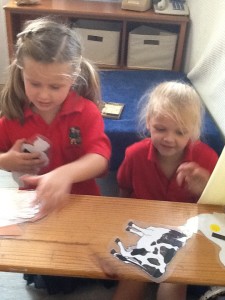
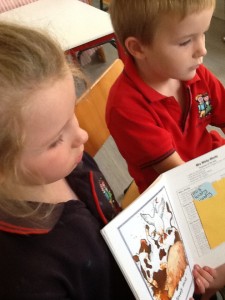
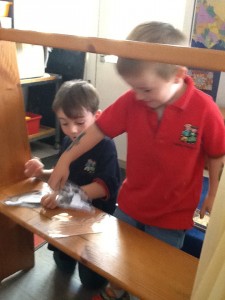
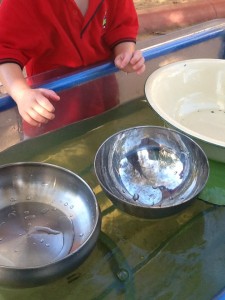 Australian readers of this blog may have seen the art installation at the Victorian Art Gallery of lots of metal balls floating around a pool and gently tinkling against each other. Continuing very hot weather has prompted lots of water activities here and I was reminded of this idea recently, so we tried it at kinder. Metal bowls floating in water and gently striking each other to make quiet music is a lovely idea, and in fact the water music is very pleasing – but first Bella had to explore the bowls, which meant vigorous splashing and making tsunamis of waves, filling and sinking them and having fun! Metal balls would offer a clearer focus on the sounds, but the balls are still in the catalogues and the bowls were in the cupboard. Did the (brief) aesthetic experience register for Bella, or only for me? I do know that she was responding to the sensory and movement possibilities of this experience, we were sharing oral language and developing vocabulary around filling, sinking, waves, force and that she was communicating her observations. The sounds created were a part of that.
Australian readers of this blog may have seen the art installation at the Victorian Art Gallery of lots of metal balls floating around a pool and gently tinkling against each other. Continuing very hot weather has prompted lots of water activities here and I was reminded of this idea recently, so we tried it at kinder. Metal bowls floating in water and gently striking each other to make quiet music is a lovely idea, and in fact the water music is very pleasing – but first Bella had to explore the bowls, which meant vigorous splashing and making tsunamis of waves, filling and sinking them and having fun! Metal balls would offer a clearer focus on the sounds, but the balls are still in the catalogues and the bowls were in the cupboard. Did the (brief) aesthetic experience register for Bella, or only for me? I do know that she was responding to the sensory and movement possibilities of this experience, we were sharing oral language and developing vocabulary around filling, sinking, waves, force and that she was communicating her observations. The sounds created were a part of that.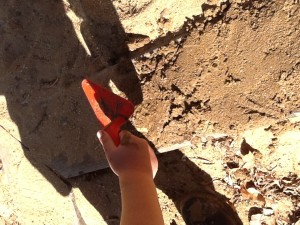 What a great topic for play, with the sensory aspect of messy mixing sand and water, the physical requirements (large motor) of pumping the water and transporting the mix, then spreading it and smoothing it (fine motor), as well as the many opportunities for inclusion of a number of children to do a range of jobs. The role play of being a boss or a worker, and imitating what they have seen happen in real life has so much play potential. It took up the whole of the time spent outdoors. Then the next day? Onto something else, despite our attempts to refresh their interest….
What a great topic for play, with the sensory aspect of messy mixing sand and water, the physical requirements (large motor) of pumping the water and transporting the mix, then spreading it and smoothing it (fine motor), as well as the many opportunities for inclusion of a number of children to do a range of jobs. The role play of being a boss or a worker, and imitating what they have seen happen in real life has so much play potential. It took up the whole of the time spent outdoors. Then the next day? Onto something else, despite our attempts to refresh their interest….